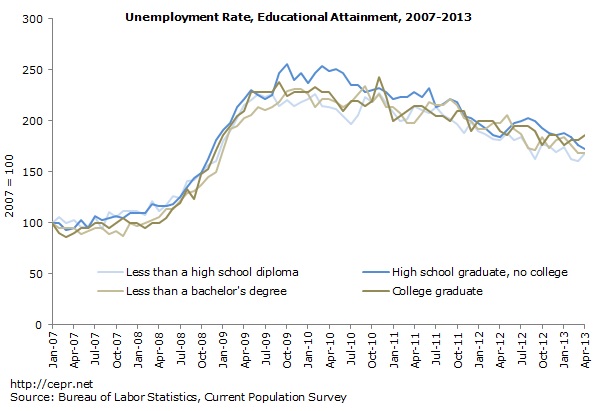Fact-based, data-driven research and analysis to advance democratic debate on vital issues shaping people’s lives.
Center for Economic and Policy Research
1611 Connecticut Ave. NW
Suite 400
Washington, DC 20009
Tel: 202-293-5380
Fax: 202-588-1356
https://cepr.net
May 3, 2013
One issue worth emphasizing from the recent job numbers and past reports is that there is zero evidence that the prolonged period of high unemployment is due to a lack of skills of the workforce. This is known because there are no major areas of the economy in which we see the standard signs of a shortage of skilled workers: rising wages, increasing hours, and large numbers of vacancies. However at an even more basic level, the rise in unemployment rates has been roughly proportionate across education levels.

For more, check out the latest Jobs Byte.